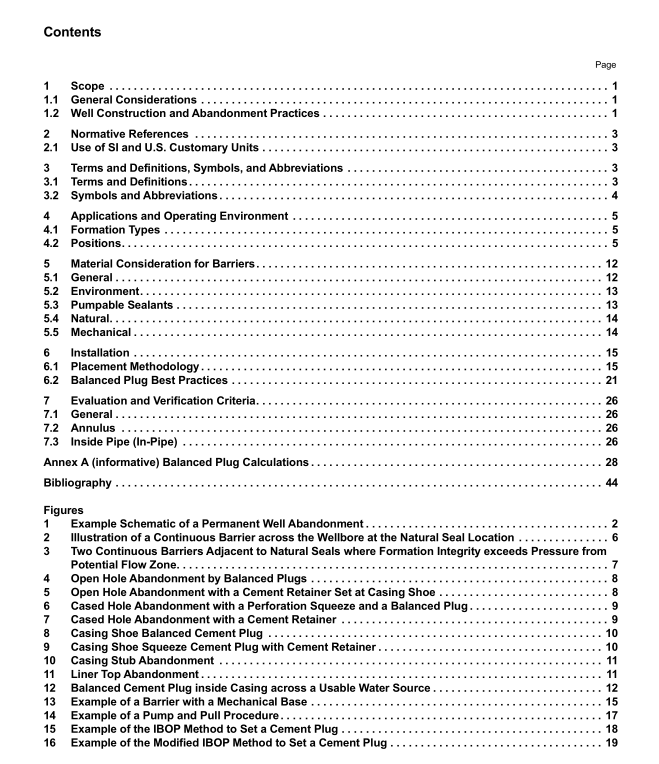API RP 65-3 pdf download

API RP 65-3 pdf download Wellbore Plugging and Abandonment
1 Scope
1.1General Considerations
This document provides guidance for the design, placement, and verification of cement plugs in wells to betemporarily or permanently abandoned, as well as remediation and verification of annular barriers. Wellstemporarily abandoned (suspended) are intended to be re-entered in the future.The placement of barriersmay depend on whether the well is to be temporarily or permanently abandoned.
The information in this document is general in nature. Wellbore plugging and abandonment practices willvary with regulatory requirements, well type,and purpose.Sound engineering and operational practicesshould be applied to each wellbore plugging operation.Cement plug lengths are not considered in thisdocument.
1.2Well Construction and Abandonment Practices
This document assumes that generally accepted well construction practices were followed during theinstallation of the cemented casings.
As specified in APl 65-2, properly designed casing strings cemented in place provide multiple barriers duringwell operations.
Abandonment barriers may include those placed:-across any exposed casing/liner shoe;
— in open hole;
— above perforated intervals in cased hole;
-at points where casing has been removed;
-across liner tops;
-above and below usable water sources;
– above or below hydrocarbon bearing zones or other potential flow zones;-at the surface or mudline.
See Figure 1 for an example of a permanent well abandonment.
2Normative References
The following referenced document is indispensable for the application of this document For datedreferences,only the edition cited applies. For undated references,the latest edition of the referenceddocument applies (including any amendmentsladdendalerrata).
API Standard 65-2,lsolating Potential Flow Zones During Well Construction
For a listing of other documents associated with this publication, refer to the Bibliography.2.1Use of Sl and u.s.customary Units
This document contains derived metric units (Sl) and U.S. customary oilfield units. For the purposes of thisdocument, the conversion between the systems is not exact and has been intentionally rounded to allow forease of use in calibration and measurement.
3Terms and Definitions,Symbols, and Abbreviations3.1Terms and Definitions
For the purposes of this document, the following terms and definitions apply.
3.1.1
barrier
A component or practice that, if properly installed,contributes to the total system reliability by preventingliquid or gas flow.
3.1.2
bridge plug
A mechanical device, usually equipped with elastomer elements, that acts as a temporary barrier.
NOTE1 A pumpable sealant may be placed below it before being placed in the wellbore,or above it after beingactivated.
NOTE 2lt can be placed in the wellbore using a workstring, coiled tubing, or wireline.
3.1.3
cement
Any material or combination of materials fluidized and pumped into the well to provide a seal.
NOTE This includes pumpable sealants containing Portland cement, pozzolan blends, blast furnace slag blends,phosphate cement, hardening ceramics, resins, geo-polymers or other appropriate materials.
3.1.4
coiled tubing
long, continuous length of pipe wound on a spool.
NOTE The pipe is straightened prior to pushing into a wellbore and rewound to coil the pipe back onto the storagespool pulling out of the wellbore.
3.1.5
dump bailer
A wireline or slickline tool used to place small volumes of cement in a wellbore.









